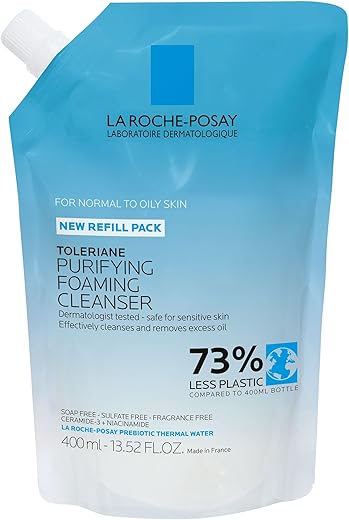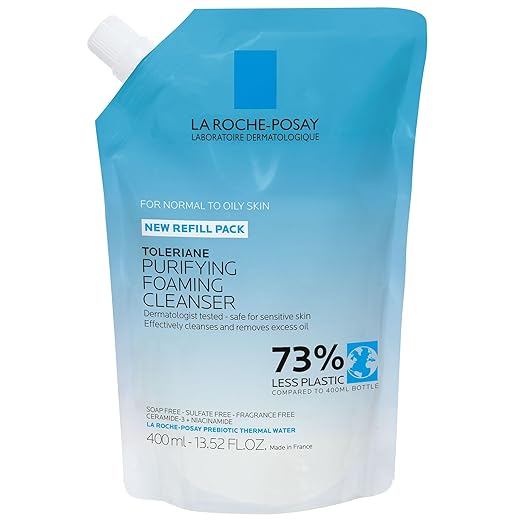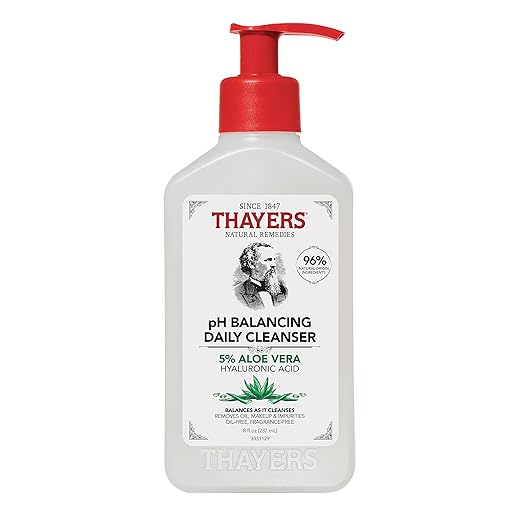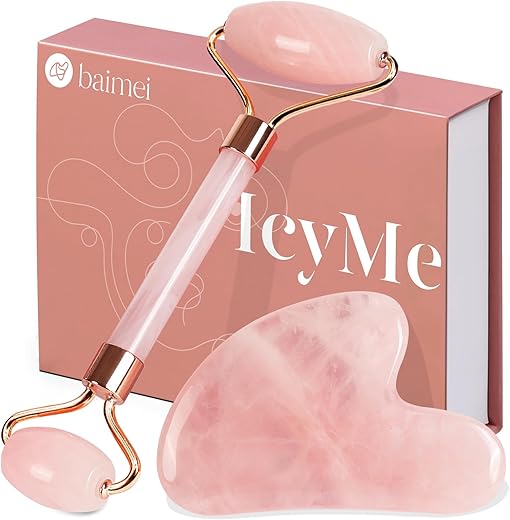
Feed, Don’t Strip: Prebiotic Cleansers for Balanced Skin
Feed, Don’t Strip: Why Your Cleanser Should Support Skin’s Microbiome
Gentle, prebiotic-focused cleansers aim to FEED beneficial microbes rather than STRIP them away. We are moving past the belief that a “deep clean” is always healthier; over-cleansing can disrupt microbiome balance and worsen sensitivity, oiliness, acne, and dryness.
This article will explain what the skin microbiome is, how traditional cleansers can harm it, what makes a cleanser “prebiotic,” and how to pick and use microbiome-friendly products for different skin types. Expect practical tips, ingredient guidance, and realistic expectations. Let’s start feeding, not stripping today.




Feed Your Face with Feeding Frenzy Prebiotic Cleanser: Cleanse Like a Pro
What Is the Skin Microbiome and Why Balance Matters
A simple definition
The skin microbiome is the community of bacteria, fungi, and other tiny organisms that live on your skin. Think of it like a neighborhood: most residents are helpful, doing daily chores you don’t see—keeping oil levels steady, signaling to your immune system, and occupying space so invaders can’t move in.
What these microbes actually do
Their roles are practical and immediate:
What “balance” looks like
Balance isn’t about having zero microbes; it’s about diversity and the right populations in the right places. A well-balanced microbiome adapts to changes—seasonal shifts, sweat, or travel—without triggering persistent redness, flaking, or breakouts. When balance is lost (dysbiosis), you may see increased sensitivity, more frequent acne flares, or a weakened barrier that leads to dryness and irritation.
Everyday habits that upset the neighborhood
Common routines can unintentionally disturb this ecosystem:
If you’ve ever switched to a “stronger” cleanser and noticed immediate tightness or stinging, that’s often your microbiome and barrier reacting.
Next, we’ll dig into exactly how traditional cleansers strip this balance and why that can make common skin problems worse.
How Traditional Cleansers Can Strip and Why That Harms Skin
What surfactants actually do
Cleansers work by using surfactants — molecules that grab oil and dirt and lift them into water. That’s great for mascara smudges and sunscreen, but surfactants aren’t discriminatory. Strong, anionic surfactants like sodium lauryl sulfate (SLS) and sodium laureth sulfate (SLES) pull away not only grime but also the skin’s natural lipids and surface microbes. High-foaming formulas often rely on these surfactants because consumers equate lather with cleanliness; in reality, foam intensity often tracks with potential for stripping.
The chain reaction of stripping
When beneficial lipids and microbes are removed, a cascade follows:
A quick real-world test: if your skin feels tight, squeaky, or like a dry sponge after rinsing, that “clean” feeling is often a warning sign, not a badge of effectiveness.
Ingredients and habits that ramp up risk
Watch for product labels and behaviors that tend to strip:
Quick practical fixes
If you suspect over-cleansing, switch to a gentle syndet or micellar formula, use lukewarm water, cut back to once or twice daily, and avoid follow-up alcohol toners. Next, we’ll look at what makes a cleanser “prebiotic” and how formulations can intentionally support that delicate microbial ecosystem.
What Makes a Cleanser 'Prebiotic' — Ingredients and Formulation Principles
What “prebiotic” means in skincare
In skincare, “prebiotic” refers to ingredients that selectively feed beneficial skin microbes or create conditions that favor a healthy microbiome — think of them as fertilizer, not probiotics (live microbes) or postbiotics (microbial metabolites). Prebiotics don’t add organisms; they support the ones already living on your skin.
Common prebiotic ingredients used in cleansers
Formulation principles that help the microbiome
Surfactant choice matters: prefer mild nonionic or amphoteric surfactants (decyl glucoside, cocamidopropyl betaine) over harsh anionic detergents. They remove dirt without violently stripping lipids.
pH and buffers: target the skin’s natural acid mantle (around pH 4.5–5.5). Buffered systems keep pH stable during and after rinsing, preventing shifts that favor pathogens.
Humectants and emollients: glycerin, hyaluronic acid, light fatty acids and gentle plant oils replenish moisture and avoid the tightness that signals barrier damage. Including ceramides, cholesterol or precursor lipids helps restore the barrier that hosts microbes.
Practical markers to look for: “prebiotic,” lists including inulin/oligosaccharides, syndet or low-foaming claims, pH-balanced formulas, and supportive actives like glycerin or ceramides. In practice, a low-foam gel or balm with prebiotic carbohydrates and mild surfactants will clean without creating the hostile, stripped environment that disrupts microbial balance.
Choosing a Prebiotic Cleanser for Different Skin Types and Concerns
A quick decision framework
Start with your primary symptom (oiliness, tightness, sensitivity) and pick texture and actives that address that without overwhelming the barrier. Look for formulary cues: “prebiotic,” inulin/oligosaccharides, glycerin, ceramides, mild surfactants, and “pH-balanced.”
Oily and acne‑prone skin
Choose lightweight, non‑comedogenic gels or mild foams that control sebum without harsh stripping.
Example products to consider: a low‑foam prebiotic gel with niacinamide or inulin and a “non‑comedogenic” label.
Dry or sensitive skin
Cream, balm, or oil‑to‑milk textures win here — they cleanse while replenishing lipids.
Combination skin and double‑cleansing
Use a light prebiotic balm/oil to remove sunscreen and makeup, then follow with a gentle gel‑cream second cleanser on oily zones. Or try gel‑cream syndet cleansers that won’t dry cheeks.
Practical checks and things to avoid
Next, we’ll translate these choices into a simple, microbiome‑friendly cleansing routine you can follow day and night.
How to Build a Microbiome-Friendly Cleansing Routine
Morning vs. evening: simple rules
In the morning, the goal is refreshment and preservation — not deep stripping. If you slept with nothing on your face, a splash of lukewarm water or a very gentle prebiotic cleanser can be enough. In the evening you should remove sunscreen, pollution and makeup; that’s when cleansing must be thorough but still microbiome‑friendly.
Single vs. double cleanse
Double cleanse (oil/balm first, then a mild prebiotic second cleanser) is ideal when you wear makeup or heavy sunscreen. Single gentle cleanses work well when you’re minimalistic. Save stronger ingredient‑forward cleanses for targeted, infrequent use rather than a daily habit.
Morning routine (step-by-step)
A 3–5 minute sequence to protect and feed the microbiome:
Example: a light, inulin‑containing gel cleanser → hyaluronic serum → niacinamide → SPF.
Evening routine (step-by-step)
Transition troubleshooting
Switch gradually: alternate old and new cleansers over 1–2 weeks, or use the gentle cleanser once daily at first. Breakouts can happen as the skin microbiome rebalances — expect 2–6 weeks. If irritation occurs, stop actives, simplify to cleanser + moisturizer, and resume slowly.
Quick daily habits to protect the microbiome
Next, we’ll tackle common myths, safety notes, and realistic expectations so you know what improvements and timelines are reasonable.
Common Myths, Safety Considerations, and Realistic Expectations
Debunking the big myths
Myth: “You need harsh cleansing to kill acne bacteria.”
Reality: Over‑stripping damages the barrier and removes protective commensals that keep pathogens in check. Harsh antiseptics can make acne and sensitivity worse long‑term.
Myth: “Prebiotics will cause breakouts by feeding bacteria.”
Reality: Prebiotics selectively nourish beneficial microbes (think probiotics’ food), encouraging a balanced community that competes with opportunistic pathogens — they don’t indiscriminately increase harmful bacteria.
Pathogenic vs. commensal microbes — why it matters
Pathogens cause inflammation; commensals protect skin and modulate immunity. A prebiotic cleanser aims to tilt the ecosystem toward helpful species, improving resilience rather than simply raising total bacterial counts. Think of it like planting grass to crowd out weeds, not pouring fertilizer on everything.
Safety & formulation concerns — practical tips
When to see a dermatologist
Seek professional care if you have:
Realistic timelines and outcomes
Expect gradual change: barrier repair, reduced redness, and improved tolerance typically appear over 4–12 weeks. Short‑term fluctuation or mild “rebalancing” breakouts can occur in the first few weeks. Prebiotic cleansers are supportive tools — most benefits show when combined with consistent moisturization, sunscreen, and targeted treatments as needed.
With myths cleared and safety checks in place, you’ll be better prepared to choose and use a prebiotic cleanser effectively as part of your routine.
Balance Over Bleach: Practical Takeaways
Choose cleansers that support the microbiome by feeding and protecting rather than stripping. Favor mild, low-foaming surfactants, prebiotic ingredients (oligosaccharides, inulin, fermented extracts), and textures suited to your skin—creams or milk for dry, gentle gels for oily, micellar waters for sensitive. Prioritize routines that protect the barrier: lukewarm water, limited frequency, gentle patting, and follow with moisturizing and SPF as needed. Make changes gradually and observe skin’s response over weeks.
Small, consistent habits beat harsh fixes. Treat cleansing as a foundation for resilience; with patience and the right products, you’ll build balanced, healthier skin daily.

Hey, I’m Ava Wilson—a skincare enthusiast and a certified esthetician. I’m dedicated to sharing my knowledge and empowering others to achieve healthy, glowing skin through simple, effective routines and natural remedies. Join me on this exciting skincare journey, and let’s unlock your skin’s potential for a confident, beautiful you.







Skeptical take: love the idea of supporting the microbiome, but feel like ‘prebiotic’ is the new marketing buzzword. How do we actually tell a legit prebiotic cleanser from a label that just sounds fancy? Anyone nerd out on ingredient lists with me?
Good skepticism, Marcus. The article suggests looking for specific markers: low-irritant surfactants (cocamidopropyl betaine used gently, decyl glucoside), humectants (glycerin, hyaluronic acid), prebiotic oligosaccharides, fermented extracts, and pH close to skin’s (~5.5). If a product yells ‘prebiotic’ but is full of harsh sulfates and alcohol, that’s a red flag.
Cool, thanks. Guess it’s back to reading tiny labels like a detective 🕵️♂️
You’re welcome — being a label detective is practical here. The article’s ‘Common Myths’ section also warns against trusting buzzwords without context.
I actually emailed a brand once asking specifics and they sent ingredient breakdowns and a short explainer. Most won’t, but it’s a way to separate the serious from the opportunists.
Also look for clinical claims or consumer studies on the brand page — not perfect but helps. And patch test!
Anyone else use La Roche-Posay Toleriane Hydrating Face Cleanser Daily? My dermatologist recommended it and it plays well with my retinoid. The article’s ‘how to build a microbiome-friendly routine’ part was super helpful for timing actives and cleansers together.
My derm recommended it as well! Been less flaky since switching.
Is it weird I like that it’s boring? Like ‘boring product = no drama’ lol.
Great to hear a derm recommended that. The Toleriane hydrating options are often compatible with retinoids because they don’t strip the barrier. The article suggests applying actives after ensuring the skin barrier is supported — so hydrating cleanser, wait a bit for skin to dry, then retinoid per your routine.
I use it too — no weird stinging with my vitamin C and retinol combo. Also a fan of pairing with a hyaluronic acid serum right after cleansing.
Not to be that guy, but how long before you see benefits from switching to prebiotic cleansers? The article says ‘realistic expectations’ but any ballpark? I’m impatient. 😅
Good question — results vary, but the article suggests giving a new routine 4–8 weeks to see consistent changes in hydration, reduced irritation, and fewer breakouts. Some immediate benefits (less tightness, less stinging) can show up right away; microbiome shifts are more gradual.
For me it was about 3 weeks for hydration improvements, 6 weeks for fewer pimples. Patience is annoying but it works.
Really loved the ‘Feed, Don’t Strip’ framing — makes so much sense. I’ve been using La Roche-Posay Toleriane Purifying Foaming Cleanser for a few months and noticed less tightness, especially when I follow up with The Ordinary Hyaluronic Acid 2% + B5.
One Q: should I avoid micellar cleansers like the Dermalogica PreCleanse if I wear heavy makeup? Feels counterintuitive to strip less when you need to remove SPF/makeup.
Great question, Brian — you don’t have to choose between removing makeup and protecting the microbiome. The article mentions micellar precleansers formulated with prebiotic ingredients (like the Dermalogica Micellar Prebiotic PreCleanse) that lift makeup without aggressive surfactants. Double cleansing with a gentle prebiotic balm or micellar as the first step, then a mild hydrating cleanser, is a solid approach.
FWIW I used to think ‘double cleanse’ = instant doom for my skin, but once I switched the second step to a microbiome-friendly cleanser it was fine. Not all micellars are created equal tho — check ingredients!
I do the same: micellar precleanse (Dermalogica) first to get makeup off, then a hydrating cleanser. My skin stopped flaring up. Also, hyaluronic acid after cleansing is a game-changer 👍
Tiny rant: found a cleanser that claimed ‘microbiome friendly’ but it had fragrance high on the list and denatured alcohol. My face cried. Lesson learned — marketing != microbiome science. 😒
On the plus side, the article’s safety considerations helped me pick better substitutes.
So true, Emily. ‘Microbiome friendly’ is a term that isn’t regulated. Fragrance and high alcohol can be irritating even if other ingredients sound beneficial. Glad the safety section helped you troubleshoot.
Ugh that sucks. I avoid fragrance-forward stuff now. A little patience and simpler formulas go a long way.
Same here — I returned a bottle after the first use. Now I stick to no-fragrance products like La Roche-Posay and have way fewer issues.
Long post incoming because I’m dramatic about my cheeks:
I have combo skin — oily T-zone, dry cheeks — and switching to La Roche-Posay Toleriane Hydrating Gentle Cleanser helped balance both areas. The article’s ‘Balance Over Bleach’ tip really resonated.
Before: heavy foaming cleanser every day, red cheeks, flaky patches. After: less redness, less moisturizer needed. Also been using The Ordinary HA serum after cleansing and it’s helped with hydration retention. Worth trying if your cleansers are too harsh.
This mirrors my experience. My cheeks were so dry I looked like a lizard. HA serum after a gentle cleanser did the trick. Patience helps too — not overnight fixes.
Thanks for the detailed share, Nina — that’s exactly the trade-off the piece highlights. Hydrating cleansers plus a lightweight humectant serum like The Ordinary HA 2% can improve skin barrier function and microbiome balance.
Quick tip from someone who hates long routines: if you’re not into double-cleansing, try a single-step prebiotic balm cleanser (IMAGE BIOME+ is one) that melts makeup and supports microbiome. Saves time, less drama.
Not a scientific study but my skin chill factor improved. 😌
I did that on weekends and it works. During the week I prefer the micellar + gentle foam combo just to be sure SPF is fully removed.
Nice practical tip, Hannah. The article mentions balm cleansers as a good compromise for makeup removal plus microbiome support — especially useful for minimalists.
Short and sweet: Thayers pH Balancing Daily Aloe Cleanser is my lazy-day savior. Smells nice, doesn’t leave me flaky. The article’s point on pH balance really stuck with me — makes sense why some cleansers feel ‘squeaky’ and wrong.
Agree! I swapped to Thayers for the pH and aloe, and my redness decreased. Also cheaper than some of the fancy microbiome labels.
Thanks for sharing, Sofia. The Thayers cleanser is a good example of a pH-friendly option. ‘Squeaky’ often means the natural oils were stripped — pH and gentle surfactants help avoid that.
Humor alert: my skin used to think cleanser = medieval torture. 😅 After reading this, I tried IMAGE BIOME+ Cleansing Comfort Balm Microbiome-Friendly and it’s basically spa butter. Not a miracle pill but WAY less reactive.
Also, anyone else surprised that ‘prebiotic’ can be more about formulation than a single ingredient? I assumed it was just one molecule you slap on.
Totally — prebiotic cleansers are about supporting the good microbes with gentle surfactants and certain food-for-skin ingredients, not just a single ‘prebiotic’ word. Labels can be misleading though, so check the full ingredient list.
Image Biome balm is luxurious — and it removes makeup without feeling like you’re erasing your face. My only gripe: it’s a bit pricey, but I use it sparingly.
Thanks y’all. Price is the struggle, but the fewer flareups have saved me $$$ on cortisone creams lol.
Exactly, Oliver. The article stresses formulation principles: mild surfactants, pH balance, humectants like glycerin or hyaluronic acid, and prebiotic oligosaccharides or fermented extracts. It’s the combination that matters.